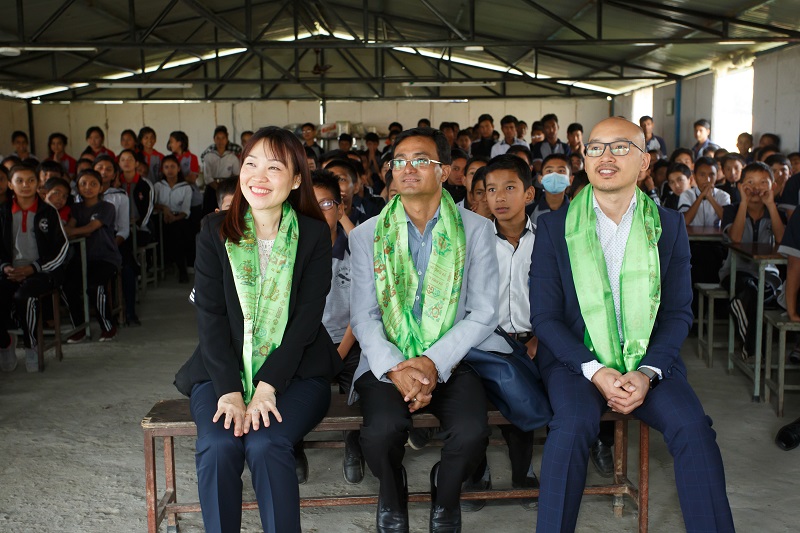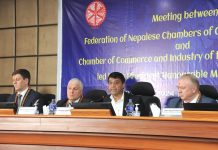Lalitpur,June 6. Broadening participation in the field of computer science, Microsoft hosted the worldwide initiative ‘Hour of Code’ on Wednesday. The event, which was organized at Bloom Nepal School in Lubhu, was designed to provide the students, as well as educators, with a better understanding of computer science— engaging the participants on an hour of hands-on session on coding.
Microsoft’s General Manager for the Southeast Asia New Markets Sook Hoon Cheah flew to Kathmandu to join the Hour of Code event, which was carried out by Microsoft’s official education partner Sochware for the students of grade 10.
“Each of you has the potential to be where and what you want to be. All you have to do is look at the positivity in life and work hard. It is all about team work, learning problem solving and being creative. The skills you learn now will help you further in the future, and Microsoft is extremely delighted to be able to offer this program and provide the opportunity. Hope this event can help you leverage your potential and give back to the community”, shared Ms. Sook Hoon in her keynote to the students.
Hour of Code is a global movement with more than 100 million learners in 180 countries. Hour of Code aims at heightening today’s youths’ interest in STEM subjects; science, technology, engineering and mathematics. Students experimented with Minecraft Hour of Code tutorialsfor nearly one hour individually or in pairs. This process was guided with video tutorials and mentorship from Microsoft and Sochware team. By engaging in coding exercise in a gamified platform, students tend to build a knack for coding at an early stage and also improve useful skills such as creativity, problem solving etc.
Microsoft’s objective is to break student’s perception towards computer science and encourage young generations to learn programming to make them future-ready. According to code.org, 58% of all new jobs in Science, Technology, Engineering and Mathematics (STEM) are in computing, but only 10% of STEM graduates are in Computer Science. The opening for computing jobs is increasing in every industry and is projected to grow at twice the rate of all other jobs. A computer science major can also earn 40% more than the college average.
After the workshop Ms. Sook Hoon met Nepali business partners, who are independent software vendors (ISVs) in the market, at the Radisson Hotel, Lazimpat. Damodar Adhikari from e-Zone International, Sanjay Dhitaland Binaya Acharya from Asteroid Venture, Surya Aryal and Sabin Ghimire from Agile Solution, Junu Thapa from Unlimited Technology, Nischal Pradhan and Alok Pandey from Brainnovation Technology attended the round table meet, where they discussed business opportunities in Nepal and how Microsoft partnership be strengthened.
At the discussion, Ms. Sook Hoon highlighted the core value of Microsoft. She said, “We built our trusted Cloud on four foundational principles, which are security, privacy, compliance, and transparency. Every day, 3,500 Microsoft security professionals protect our customers. We are a platform company and our mission is to empower every person and every organization on the planet to achieve more. We work to provide the infrastructures down to the consumer and democratize the technology. We are really keen to work with Nepali local businesses, cater the consumer demands here, while parallelly conducting tech-philanthropic activities.”
During her Nepal visit, Ms. Sook Hoon also met several government officials, universities and customers. Microsoft is helping Nepalese businesses accelerate their digital transformation journey through ISVs and the local/regional partner eco system. As of now, the company provides services—Azure, Microsoft 365, Office 365, Dynamics 365 and traditional software ecosystem.
The company is committed to the digital transformation of Nepal through skills development, business ecosystem support and industry acceleration of cloud computing. It will also continue its ongoing role in computer science education.

















